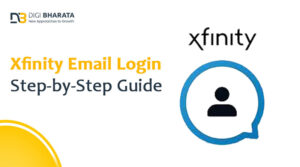In today’s digital age, data breaches, and cybersecurity threats have become common concerns across all industries. However, the healthcare industry is particularly vulnerable due to the highly sensitive nature of patient data. Healthcare organizations must take proactive steps to safeguard patient information from cyber attacks. This is where cybersecurity frameworks come into play.
Cybersecurity frameworks provide a systematic approach to managing and mitigating risks associated with cybersecurity. They serve as a guide for healthcare organizations to ensure that they have the necessary policies, procedures, and controls in place to protect patient information.
In this blog, we will discuss the importance of cybersecurity frameworks in healthcare and some of the popular frameworks being used today.
Table of Contents
Why Are Cybersecurity Frameworks Important in Healthcare?
Healthcare organizations are responsible for managing a vast amount of sensitive patient data, including medical records, personal information, and financial data. This data is highly valuable and can be targeted by cybercriminals. The consequences of a data breach can be severe and may include financial loss, reputational damage, and legal consequences.
A cybersecurity framework can help healthcare organizations to:
- Identify and assess cybersecurity risks: A cybersecurity framework guides how to identify and assess potential cybersecurity risks. It enables organizations to conduct risk assessments and prioritize risks based on their potential impact on patient data.
- Develop policies and procedures: A cybersecurity framework provides a set of guidelines and best practices for developing policies and procedures to protect patient data. It ensures that healthcare organizations have a comprehensive set of policies and procedures in place to manage cybersecurity risks.
- Implement controls: A cybersecurity framework guides on implementing technical and administrative controls to prevent and detect cybersecurity threats. It ensures that healthcare organizations have the necessary safeguards in place to protect patient data.
- Monitor and manage cybersecurity risks: A cybersecurity framework guides how to monitor and manage cybersecurity risks. It enables healthcare organizations to continuously monitor their systems for threats and vulnerabilities and take appropriate action to manage risks.
Popular Cybersecurity Frameworks in Healthcare
There are several cybersecurity frameworks available, each with its own set of guidelines and best practices. Here are some of the most popular frameworks used in healthcare:
NIST Cybersecurity Framework
The National Institute of Standards and Technology (NIST) Cybersecurity Framework is a widely recognized framework that provides a set of guidelines and best practices for managing and mitigating cybersecurity risks. The framework is designed to help organizations of all sizes and industries to manage cybersecurity risks.
Five core functions make up the NIST framework:
- Identify: Develop an understanding of the organization’s cybersecurity risks.
- Protect: Implement safeguards to prevent and detect cybersecurity threats.
- Detect: Develop and implement systems to detect cybersecurity events.
- Respond: Develop and implement procedures to respond to cybersecurity events.
- Recover: Develop and implement procedures to recover from cybersecurity events.
ISO 27001
A framework for managing information security is provided by ISO 27001, an internationally recognized standard. It is designed to help organizations establish, implement, maintain, and continually improve an information security management system (ISMS).
The ISO 27001 framework consists of four main components:
- Plan: Develop an information security policy and establish an ISMS.
- Do: Implement and operate the ISMS.
- Check: Monitor and review the effectiveness of the ISMS.
- Act: Continually improve the ISMS.
HITRUST CSF
The Health Information Trust Alliance (HITRUST) Common Security Framework (CSF) is a widely adopted framework that provides a comprehensive set of guidelines and best practices for managing and mitigating cybersecurity risks in the healthcare industry.
The HITRUST CSF consists of 19 domains, including:
- Information protection program
- Endpoint protection
- Network protection
- Data protection and privacy
- Incident management
- Business continuity frameworks in Healthcare
CIS Controls
The Center for Internet Security (CIS) Controls a set of guidelines and best practices designed to help organizations prevent and detect cyber attacks. Organizations can enhance their cybersecurity posture by implementing a prioritized set of actions outlined by this framework.
The CIS Controls consist of 20 critical security controls, including:
- Inventory and control of hardware assets
- Inventory and control of software assets
- Continuous vulnerability management
- Controlled use of administrative privileges
- Data recovery capability
COBIT
Control Objectives for Information and Related Technology (COBIT) is a framework developed by the Information Systems Audit and Control Association (ISACA) and the IT Governance Institute (ITGI). It provides a set of guidelines and best practices for IT governance and management.
The COBIT framework consists of five key focus areas:
- Governance and management of enterprise IT
- Alignment of IT with business goals
- Delivery of IT services
- Management of IT resources
- Management of IT risks
Conclusion
In conclusion, cybersecurity frameworks play a critical role in safeguarding patient data in healthcare organizations. By adopting a cybersecurity framework, healthcare organizations can identify and mitigate potential cybersecurity risks, develop comprehensive policies and procedures, and implement technical and administrative controls to prevent and detect cybersecurity threats.
While there are several cybersecurity frameworks available, healthcare organizations must select a framework that best meets their needs and aligns with their specific cybersecurity goals. By doing so, healthcare organizations can ensure that patient data remains secure and protected from cyber-attacks.






















+ There are no comments
Add yours